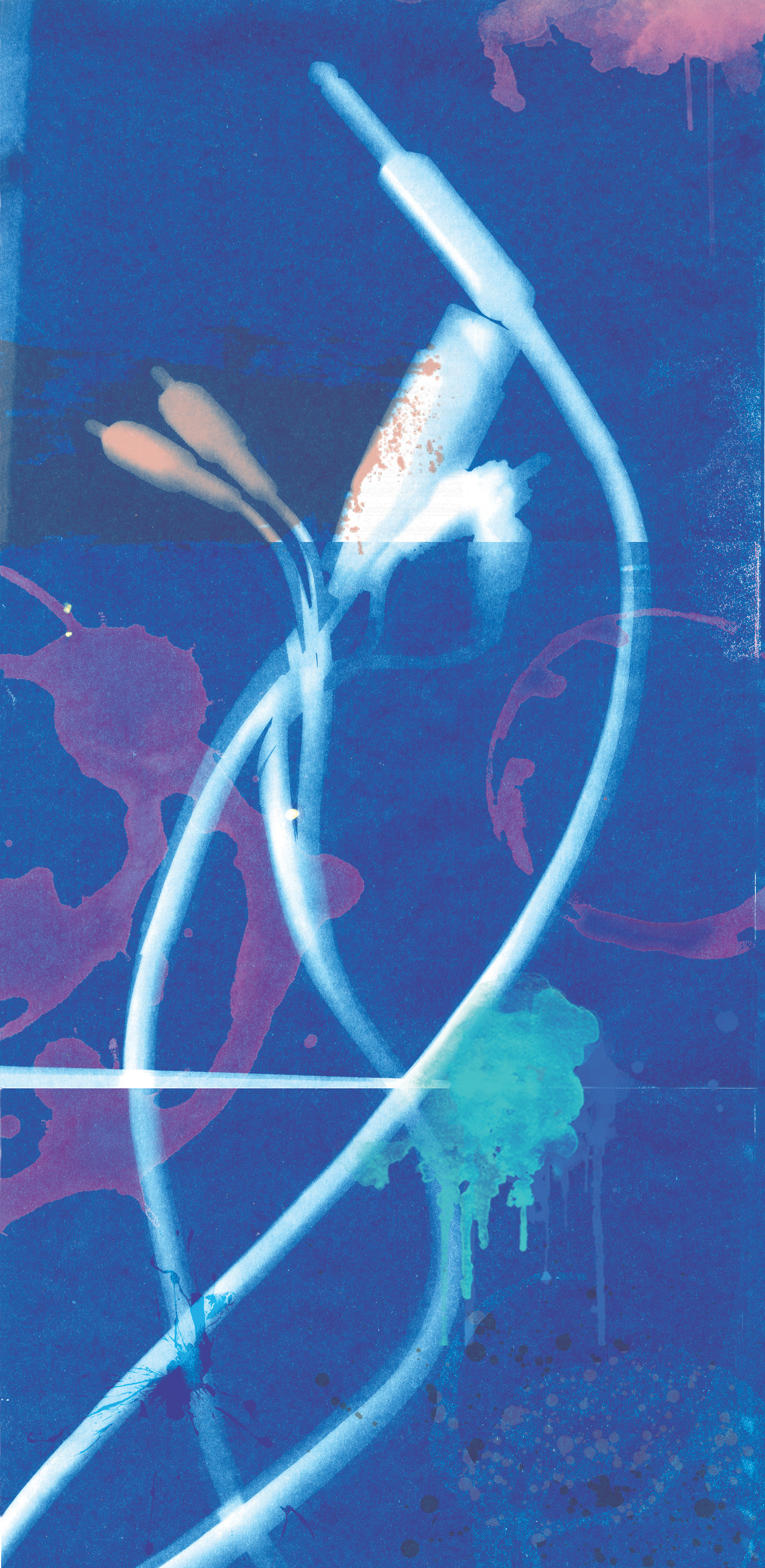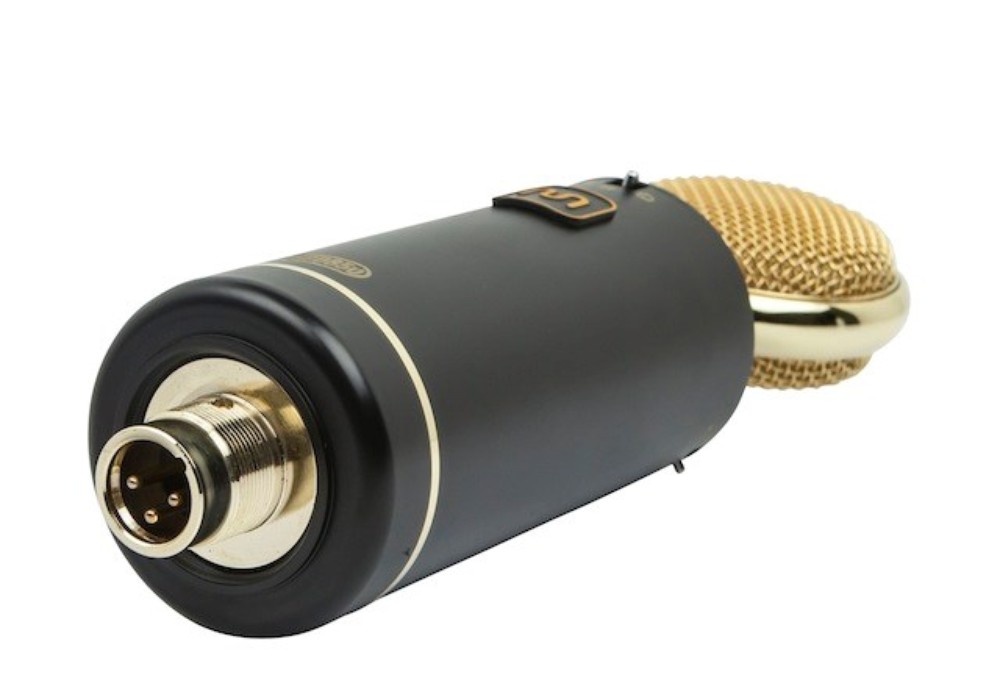Leave it to Wade Goeke at Chandler Limited to come up with a new mic circuit unlike any I (and probably anyone else) have ever experienced. The full name of this new mic from the folks in Iowa is the Chandler Limited EMI Abbey Road Studios TG Microphone, and that should help give some idea of the pedigree as well as where it fits into the range of gear offered by Chandler Limited. Their updates/recreations of some of the finest gear from EMI/Abbey Road are already modern classics, and with the TG Mic they are bringing some of that outboard hardware influence directly into the circuit of the microphone itself.
Though the TG Mic isn't a clone, on the surface it looks like many other Neumann U 47-style mics, but is finished in a beautiful dark battleship grey with the bold yellow of the Chandler logo emblazoned on the front of the body. There's an external power supply, a 4-pin XLR to connect the PSU to the mic, a standard shock mount, and a gorgeous wood box for the mic – all the expected accoutrements for a large diaphragm tube mic, except that's where things begin to diverge!
While on the surface, the TG Mic looks like a typical multi-pattern tube condenser, it's actually a solid-state mic with its own power supply providing a higher and more consistent voltage than standard phantom power. Switchable on the mic body is the choice of cardioid or omni polar patterns, -10 dB pad, two high-pass filter frequencies (50 Hz and 90 Hz), and the two switches that really take this microphone into uncharted waters. First, there's the System switch and its options of A or B; according to Wade, these "modify the input structure" and affect the level and headroom to the mic circuit. System A has higher harmonic content with about 6 dB less overall headroom to push the signal in a very present, mid-forward, and large way – everything I recorded through System A almost sounds like it's been compressed, but in the most subtle and musical way. Conversely, System B is hugely detailed and uncannily natural, with an incredible amount of headroom – especially when used with the -10 dB pad. This mic can handle kick drum blasts without a whimper.
Where both of these systems really come into play is when the last unique switch is introduced; this is what truly transforms this microphone into TG Mic character. The large, five-position switch on the back of the mic body is labeled Tape Equalizer – when have you ever seen that on a mic? The middle position (let's call this #3) is labeled FLAT after the EMI console's Tape Equalizer section, and is the most moderate or neutral setting, however it's technically not flat. Moving to the left and switch positions #1 and #2 under the NAB/IEC heading are 7.5 ips and 5 ips; to the right (#s 4 and 5), the heading is IEC/NAB and 15 ips and 7.5 ips.
Now you're probably wondering what the hell is going on with this microphone, right? Back when EMI was building mastering consoles in the late '60s and early '70s, many times tapes were brought in for mastering that were recorded on decks with different calibration than the playback deck in the mastering room was aligned to; either the mastering decks had to be recalibrated to have the same alignment curves as the source, or, in EMI's case, you have the great minds of EMI's technical department put those various curves under switches on the mastering deck so the engineer can just select the proper one for the source tape and get on with his or her job. Wade had the genius idea of taking this tape equalizer circuit, modifying the EQ curves, and then applying them to the circuit of the TG Microphone, which amounts to either bass or treble emphasis (positions 1 and 2, respectively), or bass and treble emphasis (#4), or even greater bass and treble emphasis (#5).
Combining these various voicings with the two different high-pass filter settings, as well as the two System alternatives, gives an enormous range of sounds from a single microphone. I've used the mic on voice-over spoken vocals, sung vocals, guitar amps, mono drum overhead, and front-of-kit/front-of-kick duties. In no scenario have I felt the desire to switch out to a different microphone. I do find I favor the settings with some low-frequency/bass emphasis (positions 1, 4, and 5); drums sound larger-than-life, vocals are weighted more towards the chest/body-resonant frequencies with less emphasis on sibilant ones (there is no lack of clear, open, high frequencies on this mic), and anything I've recorded with the TG Mic (both with and without compression following the preamp) seems to sit in the exact place I expect it to in the context of a mix. I'm doing far less processing in the mix to elements I record with this mic, and that's a great thing.
The audio world is full of clones, be it mics, compressors or preamps, all trying to generate that bit of magic found in the original pieces of gear on which they are based. Because of this, I'm always doubly impressed when a designer comes up with a wholly new idea and approach to a tool that isn't trying to be something else. Wade and the Chandler Limited team have knocked it out of the park with the TG Mic – I bought this mic before asking if I could provide the review, so I'm personally invested in it as a user, engineer, and studio owner, not simply as someone given a piece of gear to review. It really is that great, and now I want a second one because I can only dream of what a pair of them are like as stereo drum overheads!
If I had to list any cons against the mic or the package, they would be the power supply having a non-standard wall wart adapter instead of a built-in transformer/IEC cable combo, and the generic shock mount that needs to be treated with extreme care to avoid pulling the felt from the bands when pushing the mic into it. I replaced mine with a Rycote InVision [Tape Op #84] shock mount for additional security, and to not have to worry about tearing the felt. A carrying case for the mic box, shock mount, power supply/adapter, and cable would have also been nice, but probably would have added another $150 to the retail price. These are nitpicking issues and don't reflect in any way on the performance of the microphone itself. If you're in the market for an incredible all-around microphone that can sound like a whole stable of mics (and even added outboard!) and would easily be the centerpiece of any studio's mic locker, I encourage you to hear the TG Mic for yourself. For less than $2000, it's also an amazing value for something of this quality and character. Highest recommendation!





_disp_horizontal_bw.jpg)